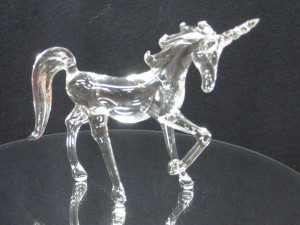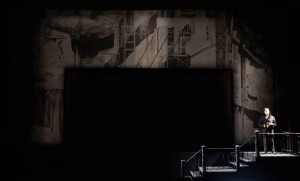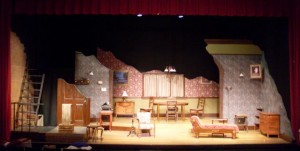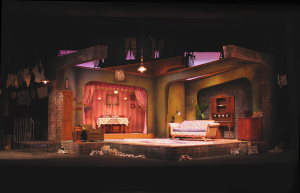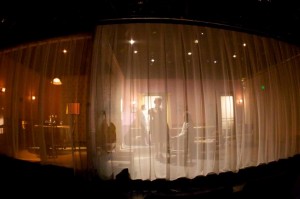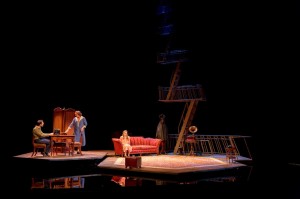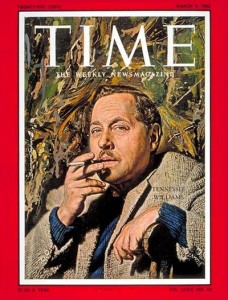Life gets tough when your mama wants you to lead it the way she thinks you should. Salty language and adult themes ahead. Proceed with caution.
Tag Archives: The Glass Menagerie
Thug Notes: The Glass Menagerie
Comments Off on Thug Notes: The Glass Menagerie
Filed under AP Literature
The Glass Menagerie Interview
Since its debut in 1945, The Glass Menagerie has been revived on Broadway seven times, in 1965, 1975, 1983, 1994, 2005, 2013, and most recently in 2017. PBS commentator Charlie Rose featured the 2013 revival cast of The Glass Menagerie on his October 4, 2013 show, including actors Cherry Jones (Amanda), Zachary Quinto (Tom), Celia Keenan-Bolger (Laura), and Brian J. Smith (Jim). The production received a total of seven 2014 Tony Award nominations for the run, including Best Revival of a Play, Best Performance by an Actress in a Leading Role in a Play (Jones), Best Performance by an Actor in a Featured Role in a Play (Smith), Best Performance by an Actress in a Featured Role in a Play (Keenan-Bolger), Best Scenic Design of a Play, Best Lighting Design of a Play (winner), and Best Direction of a Play. The production was also nominated for three Drama Desk Awards.
In the interview, the actors discuss Williams’ text, their approach to the roles, and the enduring appeal of The Glass Menagerie in American theater.
The most recent revival premiered in March, 2017, starring Sally Field as Amanda, Joe Mantello as Tom, and Finn Wittrock as Jim. The stripped-down production also featured actress Madison Ferris, who has muscular dystrophy, as Laura, prompting a wider discussion of disability in the theater. In the interview below, Sally Field discusses the role of Amanda and its importance in American theater history.
Madison Ferris was featured in a March 23 article in People magazine discussing the new production of The Glass Menagerie and how she pursues her ambitions despite the challenges her MS creates for her. Read the article, which includes a video interview, here.
Comments Off on The Glass Menagerie Interview
Filed under AP Literature
The Glass Menagerie in Performance
Since its debut in 1944, The Glass Menagerie has been in nearly constant production. From Broadway to the high school stage, Williams’ play has long been a favorite choice for actors, directors, and audiences alike.
This clip from the 1973 film features the argument concluding Scene Three, starring Katharine Hepburn as Amanda and Sam Waterson as Tom. The entire film may be viewed online.
This clip from the 1987 film version features John Malkovich as Tom and Joanne Woodward as Amanda. The Tom/Amanda argument from Scene Three begins at 3:35. This film was directed by Woodward’s husband, Paul Newman. The entire film may be viewed online.
https://www.youtube.com/watch?v=bcNt3IHRKZ0
The “gentleman caller” scene from the 1987 film, with Karen Allen as Laura and James Naughton as Jim.
https://www.youtube.com/watch?v=tSsldvJNYgc
The 2013 Broadway revival of The Glass Menagerie was nominated for seven Tony Awards. This feature article from the New York Times discusses the revival and the choices its designers made to re-launch the play for our contemporary audience. This is a selection of clips from the play shown during the Tony Awards broadcast. The production starred Cherry Jones as Amanda, Zachary Quinto as Tom, Celia Keenan-Bolger as Laura, and Brian J. Smith as Jim.
Comments Off on The Glass Menagerie in Performance
Filed under AP Literature
World Café Discussion: The Glass Menagerie
The following questions were considered during the World Café discussion in class today. Selected responses are recorded below.
Is Amanda a good mother?
- YES –> good intentions toward her children, works to support the family, invests time and money into finding Laura a husband, stays with her children despite trouble, genuinely thinks her way is best, stays (unlike their father), tries to help her children advance, won’t allow “crippled” as a descriptor for Laura, comforts Laura at the end
- NO –> very pushy, doesn’t understand Tom’s dreams because she’s worried about Laura and her own situation, overcontrolling, lost in a dream world of the past, actions reflect her desires rather than children’s needs/wishes, superficial, unkind to Tom because he reminds her of her husband, seems more focused on her children’s success than happiness
The Glass Menagerie is a play about _____ because _____.
- Selfish desires – Tom’s and father’s choice to leave, Amanda’s controlling nature
- Regret – Tom regrets leaving Laura
- Misunderstanding – Amanda doesn’t understand either of her children’s wishes
- Appearance vs. Reality – setting of apartment, Laura hiding her disability,
- Deception – Tom’s explanation about where he’s going and why, playing happy family for Jim when they’re not, Laura shrugging off the broken unicorn
- Love and betrayal – characters lying to protect other characters’ feelings, Laura hiding what she’s been doing instead of going to school
- Family – Amanda expecting Tom to be a better man than his father
- Dreams – character’s dreams unspoken to each other, expectations for other characters
- Finding yourself – Tom rejecting the warehouse to write, Amanda clinging to the Southern belle she used to be, Laura retreating into her world of glass
- Illusion – Amanda lives in the past, Laura lives in her glass world, Tom wants to escape to adventure
- Abandonment – Jim abandons Laura (hope), the father abandons the family, Tom abandons Amanda and Laura
Who is the most important character in the play? Explain.
- Amanda – she is the most present of all the characters (appears in most of the scenes), she drives the play and determines the actions of the other characters, she acts as the rock/glue for the family, she presses her desires on her children, she sets the whole play in motion, themes relate back to her relationship with everyone else
- Tom – play is told from his perspective, all conflicts relate back to him, he carries the emotions from the events, when his character leaves the family ceases to exist, focal character, his choice to bring Jim invites the play’s climax, he ends the action on his terms
- Laura – the main action of the play concerns plans for her future, the other characters’ focus in on Laura, the lighting asks the audience to pay attention to her, she has the most emotional development of the characters,
- the father – he’s the reason for their current situation, characters’ choices are viewed in comparison to his, he’s always watching (figuratively) the fallout his leaving created, his absence is the catalyst for both Amanda’s and Tom’s characters
Name and discuss the significance of an important symbol in the play.
- glass menagerie – Laura’s fragility and her hopes/dreams
- father’s picture – constant reminder of his abandonment, foreshadowing of what Tom will become,
- Victrola – Laura’s unwillingness to move and how her life is painfully repetitive
- typewriter – both Tom’s ambitions and Laura’s failed attempts at success,
- merchant marine uniform – Tom’s desire for adventure and foreshadowing of his eventual choice to leave
- blue roses – Laura’s peculiarity and attractiveness,
- fire escape – escaping the family to pursue dreams, when called the “terrace” it romanticizes their reality
- movies – Tom’s escape, further heightening of illusion vs. reality theme
- fancy lamp – illusion that the family is more than it appears to be (happy and comfortable)
- glass unicorn – Laura’s uniqueness, when its horn is broken it shows Laura trying to fit in and be accepted, broken relationship with Jim, her nervousness (when it breaks, she feels more open)
- Amanda’s dress – her clinging to the past, compares her wealthy past to her poorer present
- Jim – the “very ordinary young man” who contrasts greatly with the flawed family
How does the setting function to reveal character and provide insight on theme?
- Gloomy apartment – contributes to bleak and depressing tone, current lifestyle contrasts with the past and reinforces idea of “memory play”
- Living room – one set highlights Laura’s isolation from the world, same set throughout play heightens sense of characters being trapped in their circumstances
- New furnishings – reveals how things aren’t usually as they seem (deception; appearance vs. reality), illusion that they are more than they appear to be, shows Amanda’s wish to be like she was–genteel, Southern, and rich–than what she is
- Fire escape – Tom escaping the family
- St. Louis/South – reinforces traditional roles for women (security, marriage), enhances Amanda’s mentality that Tom and Laura do not share,
- Open windows – lets in music and other pleasures not available to the people in the apartment, reinforces Tom’s wish to escape
Do the images on the screen enhance or detract from the play? Explain.
- ENHANCES –> contributes to the idea of a “memory play” because they are dreamlike like memories, adds to visualization, helps with background knowledge not presented through setting and text, provides insight into what characters are thinking, provides symbolic meaning, reflects how things are remembered, provides comic relief, clarifies possible ambiguities in the dialogue, sets the mood for scenes, adds diversity and interest in the confined setting
- DETRACTS –> pulls attention from what the actors are doing, takes away element of suspense, can be unnecessarily distracting, can dictate opinion of the audience
Comments Off on World Café Discussion: The Glass Menagerie
Filed under AP Literature
Setting the Stage: The Glass Menagerie
Tennessee Williams calls The Glass Menagerie a “memory play,” and his specific instructions regarding the set design are included to enhance the concept of memory and how its fluid and dreamy nature influences the actions and dialogue of his characters. Below are selected set designs for The Glass Menagerie with some commentary on how they might be perceived in terms of Williams’s specifications.
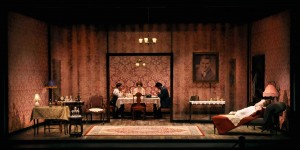
These two designs from Junghyun Georgia Lee for the REP at the University of Delaware portray the fire escape motif and the Wingfield apartment. The scrim in the second photo softens the pattern of the wallpaper on the back wall of the dining room portion of the set.
This design by Ardean J. Landhuis hints at both the inconsistency of memory–note the walls that do not go all the way up–and the setting of the play (the shape at stage left resembles the state of Missouri).
This design from California State University Stanislaus emphasizes the exterior environment surrounding the apartment. Notice the details including the clotheslines, full fire escape, and trash swept against the foundation of the set.
Gauzy curtains mask the thrust stage of Theatreworks Colorado Springs’ production. Design by Julia Przedmojska.
This design by Bob Crowley for the 2013 Broadway revival starring Cherry Jones and Zachary Quinto was nominated for a Tony Award. “Crowley and [play director John] Tiffany…envisioned the Wingfield home floating inside black pools of memory, isolating the characters from the outside world. ‘When [the audience] walks in you just see these floating platforms and you see that they are sort of lost in time,’ he said. ‘It’s a family who are completely disconnected from the real world.’ In fact, the final design is so physically isolating that the actors can only enter the stage via trap doors below the floor.” (from “The Look of a Classic: How Tony-Winning Designer Bob Crowley Re-envisioned the Set for The Glass Menagerie” by Benjamin Solomon, Playbill, 08 Sep 2013)
Comments Off on Setting the Stage: The Glass Menagerie
Filed under AP Literature
Tennessee Williams Intro
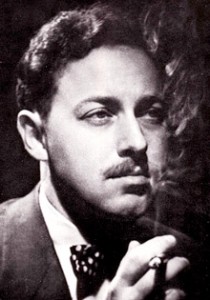 Playwright Tennessee Williams is widely considered one of the twentieth century’s leading lights of American literature. Born in 1911 in Columbus, Mississippi as Thomas Lanier Williams, Tennessee Williams was the middle of three children. His father was a salesman who much preferred life on the road to family life; as a result, Williams was raised primarily by his mother. His early years in Mississippi were relatively carefree. When Williams was seven, the family relocated to St. Louis, Missouri, a change reflecting a difference in the family’s fortunes that Williams understood but resented. He attended college briefly in Missouri until his father withdrew him and demanded he come home and get a job. Williams fell into a depression during this time working at a shoe factory. Although he made time after work to continue his writing, eventually the stress proved too much, and he suffered a nervous breakdown. After recovery he left home, finished college at the University of Iowa, and changed his name to Tennessee Williams.
Playwright Tennessee Williams is widely considered one of the twentieth century’s leading lights of American literature. Born in 1911 in Columbus, Mississippi as Thomas Lanier Williams, Tennessee Williams was the middle of three children. His father was a salesman who much preferred life on the road to family life; as a result, Williams was raised primarily by his mother. His early years in Mississippi were relatively carefree. When Williams was seven, the family relocated to St. Louis, Missouri, a change reflecting a difference in the family’s fortunes that Williams understood but resented. He attended college briefly in Missouri until his father withdrew him and demanded he come home and get a job. Williams fell into a depression during this time working at a shoe factory. Although he made time after work to continue his writing, eventually the stress proved too much, and he suffered a nervous breakdown. After recovery he left home, finished college at the University of Iowa, and changed his name to Tennessee Williams.
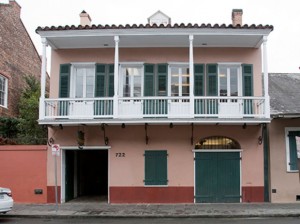 Williams famously quipped, “America has only three cities: New York, San Francisco, and New Orleans. Everywhere else is Cleveland.” He chose New Orleans as his home, and his work is infused with places and situations that could only have been spawned from the Crescent City’s mix of class, jazz, decadence, and alcohol. He moved into an apartment at 722 Toulouse Street and began working on the plays which would make him famous. The first was a flop. The second, the highly autobiographical The Glass Menagerie, premiered in 1945 to nearly universal acclaim. The character of Amanda Wingfield exerts the same kind of strong influence on her children Tom and Laura that Edwina Williams did on Tennessee, his sister Rose, and their brother Dakin. Fragile, crippled Laura Wingfield is based in no small part on Rose Williams, who possibly suffered from schizophrenia and who was subjected to a prefrontal lobotomy in 1943 at their mother’s choice.
Williams famously quipped, “America has only three cities: New York, San Francisco, and New Orleans. Everywhere else is Cleveland.” He chose New Orleans as his home, and his work is infused with places and situations that could only have been spawned from the Crescent City’s mix of class, jazz, decadence, and alcohol. He moved into an apartment at 722 Toulouse Street and began working on the plays which would make him famous. The first was a flop. The second, the highly autobiographical The Glass Menagerie, premiered in 1945 to nearly universal acclaim. The character of Amanda Wingfield exerts the same kind of strong influence on her children Tom and Laura that Edwina Williams did on Tennessee, his sister Rose, and their brother Dakin. Fragile, crippled Laura Wingfield is based in no small part on Rose Williams, who possibly suffered from schizophrenia and who was subjected to a prefrontal lobotomy in 1943 at their mother’s choice.
Oscar Brockett explains that
By the late 1940s, theatrical realism, the faithful reproduction of real life as accurately as possible on the stage, had begun to modify. Simplification, suggestion, and distortion, borrowed from other artistic movements of the early 20th century, made their way onto stage sets and into character portrayals. Stage settings became more suggestive of locales and functions. Play structures changed as well, often shifting from formal acts into more fluid collections of scenes.
Tennessee Williams’ work employs many of these theatrical devices. Symbolism is found in all of his plays, and his play titles usually indicate some deeper symbolic meaning. Normally, Williams settings are fragmentary and suggestive: consider the fire escapes, alleys, and rooms in The Glass Menagerie that require no scene changes. The use of time is fluid.
Against these suggested backdrops, though, are very lifelike characters dealing with conflicts that represent larger human issues. As Brockett puts it, “…spiritual and material drives are almost always at odds and the resolution of a dramatic action depends on how well the characters can reconcile the demaonds of these two sides of human nature.” Juxtaposition is also evident in how he reveals comic and serious elements. Amanda, for example, can be ridiculous one minute, admirable the next. Williams explores human limitations alongside their aspirations, resulting in plays that can be at once compassionate and bitter. (from The Theatre: An Introduction, Historical Edition. New York: Holt, 1979.)
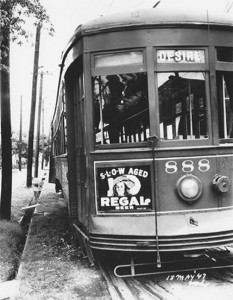 These human limitations are on full display in Williams’ second and perhaps most famous play, A Streetcar Named Desire, which premiered in 1947. In it, genteel Southern manners and brutish reality clash in the characters of Stanley Kowalski, his wife Stella, and her delicate sister Blanche DuBois. Named for the New Orleans streetcar that traveled through the French Quarter to the Bywater district, the play won the New York Drama Critics Circle Award and the 1948 Pulitzer Prize for Drama. It was later made into a film starring Marlon Brando, Kim Hunter, and Vivien Leigh, winning Oscars for Hunter and Leigh and a nomination for Best Actor for Brando in addition to other nominations for Best Picture and Best Adapted Screenplay. A Streetcar Named Desire is widely considered one of the preeminent plays of the 20th century.
These human limitations are on full display in Williams’ second and perhaps most famous play, A Streetcar Named Desire, which premiered in 1947. In it, genteel Southern manners and brutish reality clash in the characters of Stanley Kowalski, his wife Stella, and her delicate sister Blanche DuBois. Named for the New Orleans streetcar that traveled through the French Quarter to the Bywater district, the play won the New York Drama Critics Circle Award and the 1948 Pulitzer Prize for Drama. It was later made into a film starring Marlon Brando, Kim Hunter, and Vivien Leigh, winning Oscars for Hunter and Leigh and a nomination for Best Actor for Brando in addition to other nominations for Best Picture and Best Adapted Screenplay. A Streetcar Named Desire is widely considered one of the preeminent plays of the 20th century.
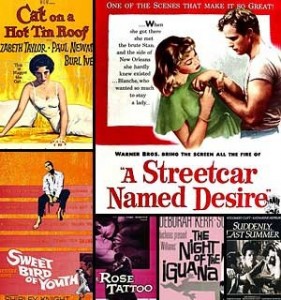 Several of Williams’ plays, many featuring clashes of culture and class, were produced and filmed in the years to following. Summer and Smoke and The Rose Tattoo received mixed reviews, but 1955’s Cat on a Hot Tin Roof (famous for Elizabeth Taylor’s slinking about in a silk slip—and not much else—in an unsuccessful attempt to engage her husband Brick’s, played by Paul Newman, attention), won another Drama Critics Circle Award and a second Pulitzer Prize. Later plays included Suddenly Last Summer, Sweet Bird of Youth, and The Night of the Iguana. As Ethan Mordden explains in The Fireside Companion to the Theatre (New York: Fireside, 1988), “His arena is the south, his genre is the cross section of personal relationships, and his archetypes are the somewhat cultured (but inbred and shy) gentlewoman and the brutish male who shatters her flimsy pretenses: in essence, Blanche DuBois and Stanley Kowalski of A Streetcar Named Desire, but, in variation, the Daughter and the Gentleman Caller of The Glass Menagerie, she terminally unsensual and he more breezy than brutish…Almost always, however, Williams deals with the confrontation of the dreamer and realist, his sympathies lying with the dreamer but the victory, in the end, always going to the realist. Thus…the Gentleman Caller does not, as was hoped, stay on to comfort the Daughter…”
Several of Williams’ plays, many featuring clashes of culture and class, were produced and filmed in the years to following. Summer and Smoke and The Rose Tattoo received mixed reviews, but 1955’s Cat on a Hot Tin Roof (famous for Elizabeth Taylor’s slinking about in a silk slip—and not much else—in an unsuccessful attempt to engage her husband Brick’s, played by Paul Newman, attention), won another Drama Critics Circle Award and a second Pulitzer Prize. Later plays included Suddenly Last Summer, Sweet Bird of Youth, and The Night of the Iguana. As Ethan Mordden explains in The Fireside Companion to the Theatre (New York: Fireside, 1988), “His arena is the south, his genre is the cross section of personal relationships, and his archetypes are the somewhat cultured (but inbred and shy) gentlewoman and the brutish male who shatters her flimsy pretenses: in essence, Blanche DuBois and Stanley Kowalski of A Streetcar Named Desire, but, in variation, the Daughter and the Gentleman Caller of The Glass Menagerie, she terminally unsensual and he more breezy than brutish…Almost always, however, Williams deals with the confrontation of the dreamer and realist, his sympathies lying with the dreamer but the victory, in the end, always going to the realist. Thus…the Gentleman Caller does not, as was hoped, stay on to comfort the Daughter…”
Williams became a darling of the midcentury literary set. Despite his successes, he battled a lifelong dependency on alcohol and drugs and was at one point committed to the hospital by his brother to recover. Although he worked feverishly after his release in the mid-1970s, his demons caught up with him. In 1983, Tennessee Williams was found dead in his New York apartment, surrounded by pills and empty bottles. He’d choked to death on a plastic bottle cap.
Comments Off on Tennessee Williams Intro
Filed under AP Literature
World Café Discussion: The Glass Menagerie
The following questions were considered during the World Café discussion in class today. Selected responses are recorded below.
The Glass Menagerie is a play about _____ because _____.
- Confinement – Amanda trapped in the past, Tom in the city/apartment, Laura in her defect
- Guilt/Regret – Tom goes back after everything that had happened; he regretted leaving his sister, Tom tries to leave but his memories catch up with him
- Illusion – Amanda lives in the past and thinks too much of everything, Tom’s distorted perspective about everything that happened, Tom dreaming of adventure, Laura living in the glass menagerie, everyone has big dreams but doesn’t work at them
- Deception – The facts we know from the play come from memory so they’re affected by Tom’s emotions, everything is altered/exaggerated so it’s deceptive, Amanda creates a reality for her children to adhere to
- Escape – The father’s picture represents “family” to Amanda (she hasn’t moved on), Tom knows his father got out so it gives him hope/inspiration to escape as well, Amanda wants Laura to escape through marriage, Laura escapes into her menagerie, Jim escapes by taking night classes
- Escaping reality – Tom wants adventure, Amanda is stuck in the past, Laura lives in her own world, Tom goes to the movies, Tom tries to escape his memories of Laura, Amanda in denial about her actual life
- Abandonment – Tom leaves Amanda and Laura like their father did
- Family hardship – Laura feels as though she’s crippled, Tom doesn’t want to work at the factory, Tom’s leaving makes it harder for Amanda, Tom always fighting with Amanda, Laura does not fulfill what Amanda wants
- Obstacles – Laura is crippled, Amanda wants to find Laura a husband, Tom can’t get along with his mother
- Isolation – Laura keeps herself isolated because of her disability, but Jim sees that and tries to bring her into the normal world when he kisses her
Who is the most important character in the play? Explain.
- Amanda – she plays a bit part in every situation, she is the reason for the split, she pushes her children (Tom into escaping, Laura into anxiety), she keeps the family together, she wants Laura to succeed in life and for Tom to live up to his responsibilities, she’s manipulative and tries to get the family to do what she wants, tries to live a different life through Laura
- Tom – the story itself is his memories, he had to do all the work for the family including finding the gentleman caller, his memories bring emphasis to certain characters and their feelings, he brings in the conflict and ends it
- Laura – the play is Tom’s reflection and regret about how he treated her, she is the center of the play, she’s protected by her family because of her fragility, Tom does everything for her, she is always on Tom’s mind
- Jim – he’s the catalyst for the destruction of the family, his actions create the final break between Amanda and Tom, he builds up and then “breaks” Laura, wake up call to reality, crushes dreams of family
- the father – he’s the reason for their current situation, characters’ choices are viewed in comparison to his, he’s always watching (figuratively) the fallout his leaving created, his absence is the catalyst for both Amanda’s and Tom’s characters, he’s the first domino, the only realistic character
Name and discuss the significance of an important symbol in the play.
- glass menagerie – Laura’s fragility and her hopes/dreams
- father’s picture – constant reminder of his abandonment, foreshadowing of what Tom will become, represents memory of him and family’s situation because of his absence, what could have been
- Victrola – Laura’s unwillingness to move and how her life is painfully repetitive, Laura clinging to her father’s memory
- fire escape – Tom can leave anytime he wants and escape from his life, wish to escape current lifestyle, Laura tries to use the fire escape but stumbles every time (shows how she can’t escape Amanda’s expectations), freedom
- unicorn – symbolizes Laura’s difference, Laura’s innocence breaks when Jim kisses her just like the horn of the unicorn breaks off, Tom and Laura’s relationship breaks after it does, it isn’t real–when Laura opens up to Jim, she becomes like everyone else
- movies – Tom’s need for adventure and freedom
- blue roses – roses mean love, but blue roses don’t exist; shows how Laura believes in a relationship that doesn’t exist, uniqueness
- music and dancing – what they can’t be
- candle – Laura blows out hope
- Amanda’s dress – Amanda’s old life
- typewriter – both Tom’s ambitions and Laura’s failed attempts at success
How does the setting function to reveal character and provide insight on theme?
- Cramped apartment – reinforces ideas of entrapment (Tom escapes through movies, Amanda through memories, Laura through her glass menagerie), small set forces us to focus on the events at hand, this house is their whole world, maintain decency of setting to feign order/normality of family, interior as nice as Amanda can make it to show what they used to be, reinforces that they are living in the past
- Dark surrounding apartment – nothing really out there for the Wingfields, apartment is their only common place to go, isolates the family
- Great Depression – everyone is poor and wants a form of escape, women dependent on men for financial support, women expected to be pretty and good homemakers to attract a good husband
- Living room – Laura sleeps here/keeps focus of play on her, everything Laura cares about (Victrola, glass menagerie) is here
- Fire escape – Tom escaping the family, Tom can leave whenever he wants but Laura can’t, reality outside the apartment
- Music – Laura winds Victrola to calm herself down, enhances the drama
- Light – provides intensity/focus (Amanda nagging Tom, Laura’s state of mind when the gentleman caller arrives, lights going out shows Tom’s irresponsibility and selfishness
- Screen images – emphasizes dreamlike state of play, keeps things foggy/unclear, reminders that this is a memory
- Southern setting – gives Amanda strong family values which makes her pressure her children to succeed
For a previous discussion, see the post here.
Comments Off on World Café Discussion: The Glass Menagerie
Filed under AP Literature

